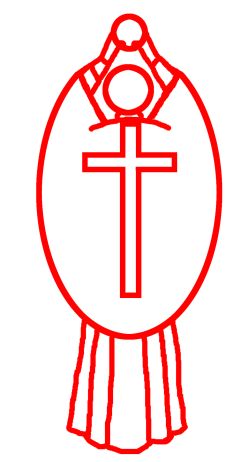
4 minute read
Dancing at Eastertide
Dorothy Cummings McLean reports on an event that brought together Latin Mass-loving Catholics from Scotland and beyond
Catholics who love the Traditional Latin Mass met for an evening of waltzing and ceilidh dancing on Saturday, April 6 in Edinburgh’s Lauriston Hall to celebrate the Easter season.
The Eastertide Dance featured a ceilidh trio from Dundee - Elijah Smith on accordion, Anna Smith on guitar, and Marcjanna Słodczyk on violin. Glasgow’s Anthony O’Connor accompanied six English waltzes on piano.
During the intermission, the crowd heard jazz standards sung by Joseph Yue and played by Janek Smiałek, whose talented improvisations contribute to monthly social dancing parties after the FSSP Mass at St Andrew’s, Ravelston. A few swing-dance loving souls took advantage of the mid-century music while the rest of the company chatted by the refreshment tables.
The Eastertide Dance was the second of what its committee hopes will become biannual Edinburgh events. The tradition-to-be was inaugurated by the Michaelmas Dance last September; this introduced a new generation (or two) to dance cards and provided the gentlemen present with practice in inviting ladies onto the floor. Those who frequent the Ravelston TLM’s After-Mass Tea pride ourselves on our hospitality, and it is edifying to witness familiar faces introduce themselves to newcomers and either strike up conversations or ask them to dance.
Currently the committee consists of Sophia Tait, who did doubleduty as liaison to the musicians and the ceilidh caller at both dances; Madeleine Thurrott, who directed kitchen volunteers; Marek Muńko, who both manned the door and drove an electric piano and a tea set from one end of Edinburgh to the other; and me, the hostess and flogger of tickets. Proceeds - if any - were to go to Una Voce Scotland, but with the high cost of the hall and the family-friendly price of tickets, we’re hoping that three times will be the charm. This third event will be on Michaelmas Eve, 2024 (and for information, please contact me at dorfle@yahoo.ca).
Our dances are inspired by Viennese balls as much as by Scottish ceilidhs, thanks to the Ravelston Catholics learning to waltz. The dances are also a homage to the mostly extinct institution of the parish dance, at which Catholics (including in my native Canada) often met their future spouses.
Our dances are meant to provide rational amusement and fellowship in an obviously extra-liturgical, but distinctly Catholic atmosphere. They begin with the Prayer to Saint Michael and conclude with a Marian anthem. The music is provided by church musicians and talented amateurs from within the Catholic community.
The dances either foster conversation and/or cooperation between men and women or unite the whole company in the delightful challenge of getting through vigorous Scottish dances unharmed. Wine and beer are provided, but interestingly I have taken home many bottles, which suggests that guests are there to dance, not to drink.
The celebratory atmosphere is supported by as-formal-as-you-have-inyour-closet eveningwear which, this being Scotland, includes Highland dress. And the formal structure of the dance allows for happy spontaneity: guests spontaneously volunteering to lay tablecloths or wash the dishes and - my favourite moment - the ceilidh violinist suddenly joining in the jazz musicians’ rendition of ‘Fly Me to the Moon’ from across the hall.
As old-fashioned social dancing grows in popularity in TLM circles, there are also naysayers who dig up condemnations from various Catholic divines. I would argue that these texts need to be seen in their specific historic contexts; pre-war public dance halls, for example, were not salubrious places and such fad dances as the Bunny Hug and the Grizzly Bear were immodest.
But to reject all forms of social dance altogether would be a terrible mistake. As lovers of Catholic Tradition, we are simultaneously preserving and renewing Catholic social life, and dance has a useful role here.










